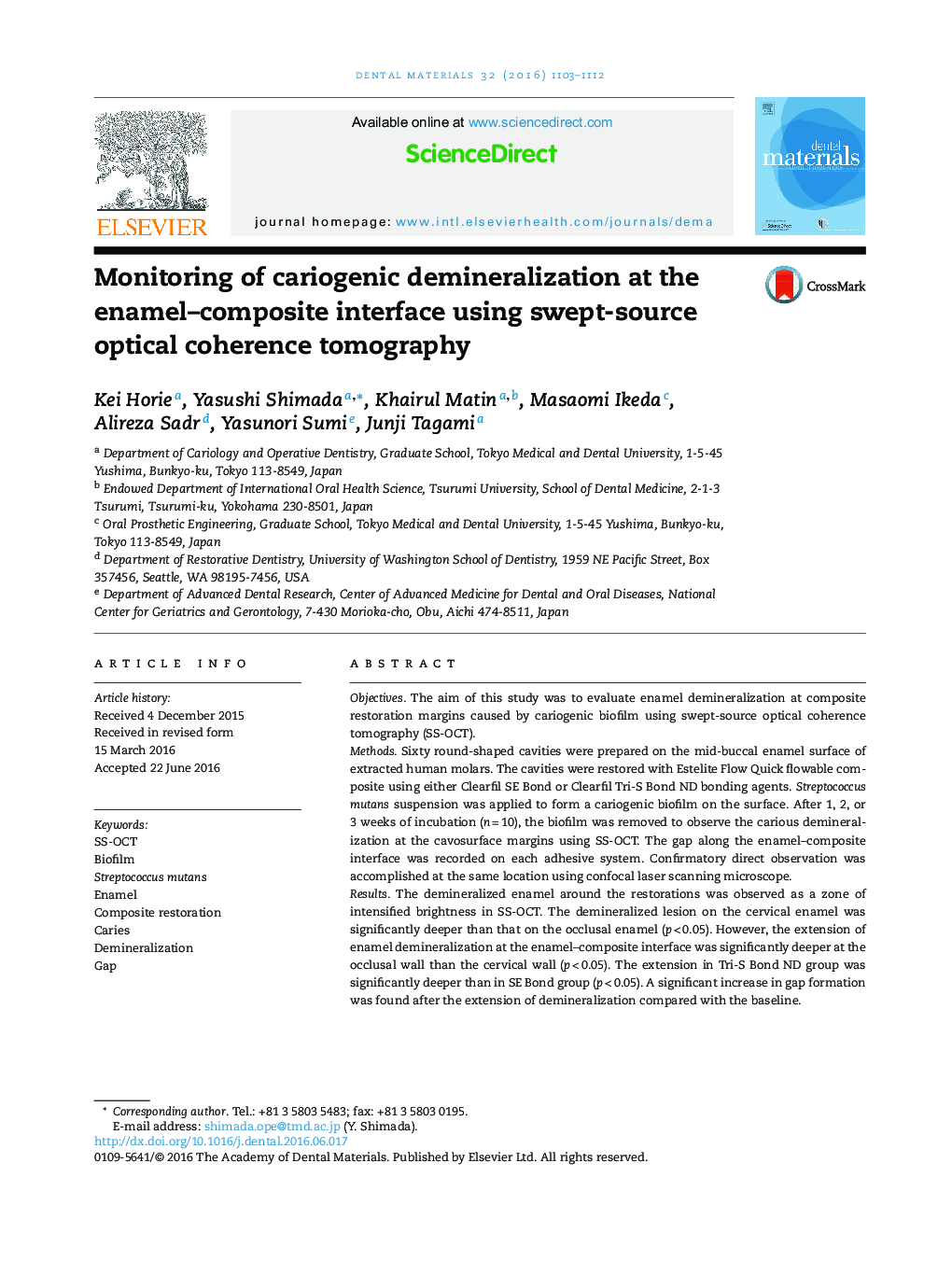| کد مقاله | کد نشریه | سال انتشار | مقاله انگلیسی | نسخه تمام متن |
|---|---|---|---|---|
| 1420362 | 1398058 | 2016 | 10 صفحه PDF | دانلود رایگان |

• Streptococcus mutans suspension was applied to form a cariogenic biofilm on composite restoration.
• Swept-source optical coherence tomography (SS-OCT) was used to observe the carious demineralization at the cavosurface margins.
• Demineralized enamel around the restorations was observed as intensified brightness in SS-OCT image.
• Cariogenic demineralization took place with the gap formation at the enamel–resin interface.
• SS-OCT appears to be a promising modality for the detection of secondary caries at early stage.
ObjectivesThe aim of this study was to evaluate enamel demineralization at composite restoration margins caused by cariogenic biofilm using swept-source optical coherence tomography (SS-OCT).MethodsSixty round-shaped cavities were prepared on the mid-buccal enamel surface of extracted human molars. The cavities were restored with Estelite Flow Quick flowable composite using either Clearfil SE Bond or Clearfil Tri-S Bond ND bonding agents. Streptococcus mutans suspension was applied to form a cariogenic biofilm on the surface. After 1, 2, or 3 weeks of incubation (n = 10), the biofilm was removed to observe the carious demineralization at the cavosurface margins using SS-OCT. The gap along the enamel–composite interface was recorded on each adhesive system. Confirmatory direct observation was accomplished at the same location using confocal laser scanning microscope.ResultsThe demineralized enamel around the restorations was observed as a zone of intensified brightness in SS-OCT. The demineralized lesion on the cervical enamel was significantly deeper than that on the occlusal enamel (p < 0.05). However, the extension of enamel demineralization at the enamel–composite interface was significantly deeper at the occlusal wall than the cervical wall (p < 0.05). The extension in Tri-S Bond ND group was significantly deeper than in SE Bond group (p < 0.05). A significant increase in gap formation was found after the extension of demineralization compared with the baseline.SignificanceThe carious demineralization around composite restorations were observed as a bright zone in SS-OCT during the process of bacterial demineralization. SS-OCT appears to be a promising modality for the detection of caries adjacent to an existing restoration.
Journal: Dental Materials - Volume 32, Issue 9, September 2016, Pages 1103–1112